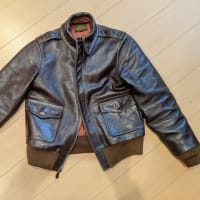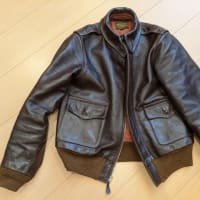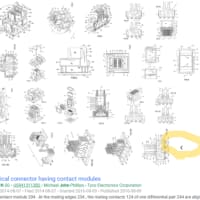US202002850(JP, Mitsubishi)
"[0031] A fourth aspect of the present invention is a method for producing a carbon fiber bundle, wherein the method includes the following steps 4) to 6):
[0032] 4) a stabilization step of heating a carbon fiber precursor acrylic fiber bundle composed of the carbon fiber precursor acrylic fiber according to the second aspect of the present invention in an oxidizing atmosphere at 200° C. or higher and 300° C. or lower to obtain a stabilized fiber bundle;
[0033] 5) a pre-carbonization step of heating the stabilized fiber bundle at 550° C. or higher and 800° C. or lower in a non-oxidizing atmosphere to obtain a pre-carbonized fiber bundle; and
[0034] 6) a high-temperature carbonization step of heating the pre-carbonized fiber bundle at 1200° C. or higher and 3000° C. or lower to obtain a carbon fiber bundle."
[0012] 本発明の第四の態様は、下記4)〜6)の工程を含む炭素繊維束の製造方法である。
4)本発明の第二態様の炭素繊維前駆体アクリル繊維から構成される炭素繊維前駆体アクリル繊維束に対し、酸化性雰囲気中で200°C以上300°C以下に加熱し耐炎化繊維束とする耐炎化工程。
5)前記耐炎化繊維束を非酸化性雰囲気中、550°C以上800°C以下で加熱し前炭素化繊維束とする前炭素化工程。
6)前記前炭素化繊維束を非酸化性雰囲気中、1200°C以上3000°C以下で加熱し炭素繊維束とする高温炭素化工程。
EP3578698(JP, Toray)
"[0056] The acrylic fiber bundle obtained by the above-mentioned production method is subjected to an oxidation treatment in an oxidative atmosphere at 200 to 300°C. It is preferable to raise the treatment temperature from low temperatures to high temperatures in a plurality of steps in order to obtain the oxidized fiber bundle. Furthermore, it is preferable to stretch the fiber bundle at a high stretching ratio so as not to cause the occurrence of fuzz in order to sufficiently express the performance of the carbon fiber bundle. Then, the carbon fiber bundle is produced by heating the obtained oxidized fiber bundle to 1,000°C or more in an inert atmosphere such as nitrogen."
[0061] 前述の製造方法によって得られたアクリル系繊維束を、200〜300°Cの酸化性雰囲気中で耐炎化処理する。処理温度は低温から高温に向けて複数段階に昇温するのが耐炎化繊維束を得る上で好ましい。さらに毛羽の発生を伴わない程度に高い延伸比で繊維束を延伸するのが、炭素繊維束の性能を十分に発現させる上で好ましい。次いで得られた耐炎化繊維束を窒素等の不活性雰囲気中で1000°C以上に加熱することにより、炭素繊維束を製造する。
US2019194829(JP, Toray)
"[0045] Preferably, the precursor fiber for carbon fiber produced as described above is sequentially subjected to a stabilization step wherein the fibers are made fireproof in the air at a temperature of 200 to 300° C., a pre-carbonization step wherein the fibers produced by the stabilization step is preliminarily carbonized in an inert atmosphere at a temperature of 300 to 800° C., and a carbonization step wherein the fibers produced by the pre-carbonization step are carbonized in an inert atmosphere at a temperature of 1,000 to 3,000° C. to produce the carbon fiber."
[0045] 本発明では、前述のようにして得た炭素繊維前駆体繊維を、200〜300°Cの温度の空気中において耐炎化する耐炎化工程と、耐炎化工程で得られた繊維を、300〜800°Cの温度の不活性雰囲気中において予備炭化する予備炭化工程と、予備炭化工程で得られた繊維を1,000〜3,000°Cの温度の不活性雰囲気中において炭化する炭化工程を順次経て炭素繊維を得ることが好ましい。
"[0057] The spinning dope solution was controlled to 50° C., and after ejecting into air, it was introduced in a coagulation bath prepared by mixing at 48% by weight of dimethyl sulfoxide (polymer solvent) and 52% by weight of ethylene glycol (non-solvent) controlled to 5° C., and the coagulated fiber was produced by dry-wet spinning by taking up at a speed corresponding to a spinning draft of 2.5. The coagulated fiber was washed with water and stretched in water bath. Subsequently, an amino-modified silicone-based silicone oil agent was applied to the fiber bundle that had been stretched in water bath, and the drying densification process was conducted by using a heater roller, and stretched in a steam at elevated pressure to a total draw ratio of the process of 10 to produce a polyacrylonitrile precursor fiber for carbon fiber having a filament fineness of 0.8 dtex. Next, the resulting polyacrylonitrile precursor fiber for carbon fiber was subjected to a stabilization process in air having a temperature gradient of 220 to 270° C. to produce a stabilized bundle of fibers. The resulting stabilized bundle of fibers was subjected to preliminary carbonization treatment in a nitrogen atmosphere at a temperature of 300 to 800° C. to produce a bundle of preliminarily carbonized fibers. The resulting bundle of preliminarily carbonized fibers was subjected to carbonization treatment in a nitrogen atmosphere at the maximum temperature of 1400° C. Subsequently, the fiber was subjected to electrolytic surface treatment by using aqueous solution of sulfuric acid for the electrolyte, washed with water, and dried, and carbon fiber was obtained after applying a sizing agent."
[0057] 得られた紡糸溶液を50°Cにコントロールして一旦空気中に吐出し、5°Cにコントロールしたポリマー溶媒であるジメチルスルホキシドを48質量%、非溶媒であるエチレングリコールを52質量%の比率で混合した凝固浴に導入して、紡糸ドラフト2.5になる速度で引き取る乾湿式紡糸法により凝固糸条とした。この凝固糸条を、水浴で洗浄した後、水浴において延伸した。続いて、この水浴延伸後の繊維束に対して、アミノ変性シリコーン系シリコーン油剤を付与し、加熱ローラーを用いて、乾燥緻密化処理を行い、加圧スチーム中で延伸することにより、製糸全延伸倍率を10倍とし、単繊維繊度0.8dtexのポリアクリロニトリル系炭素繊維前駆体繊維を得た。次に、得られたポリアクリロニトリル系炭素繊維前駆体繊維を温度220〜270°Cの温度勾配を有する空気中において耐炎化処理し、耐炎化繊維束を得た。得られた耐炎化繊維束を、温度300〜800°Cの窒素雰囲気中において、予備炭素化処理を行い、予備炭素化繊維束を得た。得られた予備炭素化繊維束を、窒素雰囲気中において、最高温度1400°Cで炭素化処理を行った。引き続いて硫酸水溶液を電解液として電解表面処理し、水洗、乾燥した後、サイジング剤を付与し、炭素繊維を得た。
EP3467165(JP, Toray)
"[0053] The "stabilization time" as used herein means the time during which the fiber bundle stays in the oxidation oven, and the "stabilized fiber bundle" means a fiber bundle after the stabilization process and before the pre-carbonization process. In addition, the "peak intensity" as used herein is the absorbance at each wavelength that is obtained by sampling a small amount of the stabilized fiber, measuring the infrared spectrum of the fiber, and subjecting the obtained infrared spectrum to baseline correction, and the spectrum is not subjected to peak splitting. Further, the sample for measurement is diluted with KBr so that the sample may have a concentration of 0.67% by mass. As described above, the conditions of stabilization should be considered according to the preferable manufacturing method described later by measuring the infrared spectrum every time the stabilization condition settings are changed. Appropriate control of the infrared spectrum peak intensity ratios of the stabilized fiber enables control of the knot strength of the obtained carbon fiber bundle."
[0053] ここで述べる耐炎化時間とは耐炎化炉内に繊維束が滞留している時間を意味し、耐炎化繊維束とは、耐炎化工程後、予備炭素化工程前の繊維束を意味する。また、ここで述べるピーク強度とは、耐炎化繊維を少量サンプリングして赤外スペクトルを測定して得られたスペクトルをベースライン補正した後の各波長における吸光度のことであり、特にピーク分割などは行わない。また、試料の濃度は0.67質量%となるようにKBrで希釈して測定する。このように、耐炎化条件設定を変更するたびに赤外スペクトルを測定して、後述の好ましい製造方法にしたがって条件検討すればよい。耐炎化繊維の赤外スペクトルピーク強度比を適切に制御することで、得られる炭素繊維束の結節強度を制御することができる。
EP3480346(JP, Mitsubishi)
[0005] In order to reduce flaws and bring about the aforementioned presence state of flaws, Patent Document 1 discloses to filter a spinning solution in two stages using a stainless steel fiber filter and a glass filter, and apply to a carbon fiber obtained from the solution a special electrolytic surface treatment. Patent Document 2 discloses that using a specific copolymerizing component and an oil agent produces a high-strength carbon fiber even when the fiber diameter is large. Patent Document 3 proposes reducing the flaw-containing fiber surface area itself by reducing the diameter of carbon fiber, in addition to three-stage filtration of a spinning solution, filtration of bath liquid or steam for use in a spinning process, and dust removal in a stabilization as well as a pre-carbonization furnace. In addition, Patent Document 4 proposes filtering a spinning solution through a filter having an opening of 5 µm or less, and filter the atmosphere in an oxidation oven through a filter having an opening of 1 µm or less. Furthermore, Patent Document 5 proposes filtering a spinning solution using a filter having a filtering performance for removing 95% or more of dust having a particle diameter of 5 µm or more when filtering the air. Furthermore, Patent Document 6 proposes a multistage-filtration method including gradually reducing the opening diameter.
欠陥を低減し、上記の欠陥存在状態とするために、特許文献1では、ステンレス繊維フィルターとガラスフィルターを用いて紡糸溶液を2段濾過し、それから得られた炭素繊維に特殊な電解表面処理を行うことを開示している。特許文献2では、特定の共重合成分と油剤を用いることで、繊維径が太くても高強度な炭素繊維が得られることを開示している。特許文献3では、紡糸溶液の3段濾過、製糸工程で用いる浴液や加圧水蒸気の濾過、ならびに耐炎化および前炭化炉での粉塵除去、に加えて炭素繊維を細径化することで欠陥が存在する繊維表面積そのものを低減することを提案している。また、特許文献4では、紡糸溶液を目開き5μm以下のフィルターで濾過し、耐炎化炉内の雰囲気を目開き1μm以下のフィルターでろ過することを提案している。また、特許文献5でも、空気を濾過した際、5μm以上の粒径の塵埃を95%以上除去する濾過性能を有するフィルターを用いて紡糸溶液を濾過することを提案している。さらに、特許文献6では開孔径を段階的に小さくして多段濾過する方法が提案されている。
EP3093380(JP, Univ. of Tokyo)
"[0082] The fiber obtained by the above-described process is transferred to a process for stabilization. Where, the fiber before being transferred to the stabilization process is preferably in a dried condition. As the method for stabilization, in particular, it is preferred to use a dry-heating apparatus in order to control chemical reaction and suppress unevenness in fiber structure, and concrete equipment thereof will be described later. The temperature and the treatment length are appropriately selected depending upon the oxidation degree of the used polymer for spinning, the fiber orientation degree and the required properties for a final product. Concretely, the treatment temperature for the stabilization is preferably 280°C or higher and 400°C or lower. More preferably, it is 300 °C or higher and 360 °C or lower, and particularly preferably, it is in a range of 300°C to 330°C. If the temperature is lower than 280°C, a problem tends to occur in a carbonization process. If the temperature exceeds 400°C, the fiber tends to be decomposed in a stabilization furnace. The treatment time of the stabilization is preferably 10 seconds or longer in order to prevent decomposition in a carbonization process. Further, in case where the treatment time of the stabilization exceeds 15 minutes, because the merit for shortening the time for stabilization becomes small and besides the fiber is fuzzed to cause reduction of strength and degree of elongation, it is preferred that the treatment time of the stabilization is 15 minutes or shorter. From the viewpoint of suppressing occurrence of fluffs, more preferably it is 5 minutes or shorter."
[0078] 上記工程により得られた繊維は、耐炎化処理の工程に移る。ただし、耐炎化処理工程に移行する前に繊維は乾燥状態にあることが好ましい。耐炎化処理方法としては、特に、化学反応の制御や繊維構造のムラを抑制するために、乾熱装置を用いることが好ましく、具体的機器については後述する。その温度や処理長は使用する紡糸用ポリマーの酸化度、繊維配向度や最終製品の必要特性によって適宜選択される。具体的には、耐炎化処理温度は、280°C以上400°C以下が好ましい。さらに好ましくは、300以上360°C以下であり、特に好ましくは300°C〜330°Cである。温度が280°C未満では、炭化工程で問題が発生する傾向にある。温度が400°Cを超えると、耐炎化炉内で繊維が分解してしまう傾向にある。耐炎化処理時間は、炭化工程で分解しないようにするために、10秒以上おこなうことが好ましい。また耐炎化処理時間が15分を超える場合、従来の耐炎化処理工程の時間短縮というメリットが小さくなるうえに、繊維が毛羽立ち、強度と伸度の低下に繋がってしまうため、耐炎化処理時間は15分以下が好ましい。毛羽発生抑制の観点から、より好ましくは5分以下である。
最新の画像[もっと見る]
-
 凡例
5日前
凡例
5日前
-
 バズリクソンズA2:第18週
1週間前
バズリクソンズA2:第18週
1週間前
-
 バズリクソンズA2:第17週
2週間前
バズリクソンズA2:第17週
2週間前
-
 バズリクソンズA2:第16週
4週間前
バズリクソンズA2:第16週
4週間前
-
 DAZN(ダゾーン):メール配信停止ボタンくらい付けとけ
1ヶ月前
DAZN(ダゾーン):メール配信停止ボタンくらい付けとけ
1ヶ月前
-
 DAZN(ダゾーン):メール配信停止ボタンくらい付けとけ
1ヶ月前
DAZN(ダゾーン):メール配信停止ボタンくらい付けとけ
1ヶ月前
-
 バズリクソンズA2:第15週
1ヶ月前
バズリクソンズA2:第15週
1ヶ月前
-
 バズリクソンズA2:第14週
1ヶ月前
バズリクソンズA2:第14週
1ヶ月前
-
 Google Patents Advanced Searchで全部表示される図面の表示を隠す
1ヶ月前
Google Patents Advanced Searchで全部表示される図面の表示を隠す
1ヶ月前
-
 召合せ框(めしあわせかまち)
2ヶ月前
召合せ框(めしあわせかまち)
2ヶ月前

















※コメント投稿者のブログIDはブログ作成者のみに通知されます